Best Laravel Composer Installation Guides to Buy in December 2025
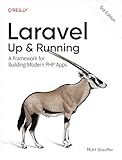
Laravel: Up & Running: A Framework for Building Modern PHP Apps


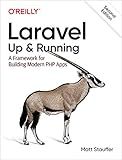
Laravel: Up & Running: A Framework for Building Modern PHP Apps



Laravel 12 for Beginners & Beyond: A Complete Guide to Building Modern PHP Web Applications with Clean Architecture, Hands-On Projects, and Best Practices


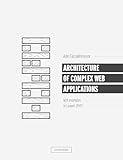
Architecture of complex web applications. Second Edition.: With examples in Laravel(PHP)


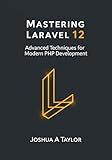
Mastering Laravel 12 : Advanced Techniques for Modern PHP Development


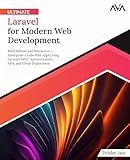
Ultimate Laravel for Modern Web Development: Build Robust and Interactive Enterprise-Grade Web Apps using Laravel's MVC, Authentication, APIs, and ... (Advanced Web Frameworks — Multi-Tech Path)


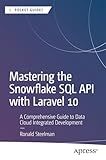
Mastering the Snowflake SQL API with Laravel 10: A Comprehensive Guide to Data Cloud Integrated Development (Apress Pocket Guides)



Practical Laravel: Develop clean MVC web applications


To install Laravel using Composer, follow these steps:
- Ensure that Composer is installed on your system. You can download and install Composer from the official Composer website.
- Open a command prompt or terminal window.
- Navigate to the desired directory where you want to install Laravel.
- Run the following command to create a new Laravel project: composer create-project --prefer-dist laravel/laravel Replace with the desired name for your Laravel project. This command will fetch the Laravel framework files and create a new Laravel project in a directory with the provided name.
- Composer will now download and install all the necessary dependencies for Laravel, including its core files and required packages. This process may take a few minutes.
- Once the installation is complete, you can navigate into the project directory: cd
- Now you can start building your Laravel application.
That's it! You have successfully installed Laravel using Composer. You can now start exploring and developing your Laravel project according to your needs.
How can I completely uninstall Laravel from my machine?
To completely uninstall Laravel from your machine, you can follow these steps:
- Delete the Laravel project directory: If you have any specific Laravel project directories, delete them from your machine. This could include folders like my-project or any other names you have used for your Laravel projects.
- Delete Laravel installation files: Find the directory where Laravel is installed on your machine. If you used Composer to install Laravel globally, it is typically located in the /usr/local/bin or /usr/bin directory (on macOS or Linux). If you are using Windows, it may be located in the C:\Program Files\laravel directory. Locate this directory and delete it.
- Remove Composer dependencies: If you want to remove Laravel globally, you can run the following command in your terminal: composer global remove laravel/installer
- Remove Laravel-related packages: If you have any additional Laravel-related packages installed globally, you can remove them with the following command: composer global remove PACKAGE_NAME Replace PACKAGE_NAME with the name of the package you want to remove.
- Remove Laravel configurations: Laravel configurations are stored in your home directory. Delete the .composer and .composer/vendor directories from your home directory.
- Remove Laravel-related paths: If you have added Laravel-related paths to your system's environment variables, remove them. This step is dependent on your operating system, so you may need to search for specific instructions on how to remove environment variables.
By following these steps, you should be able to completely uninstall Laravel from your machine.
In which programming language does Laravel use?
Laravel is a PHP web application framework.
How can I check the version of Composer installed on my machine?
To check the version of Composer installed on your machine, you can use the following command in your terminal or command prompt:
composer --version
Running this command will display the installed version of Composer on your machine.
Can I install Laravel on Windows, macOS, and Linux using Composer?
Yes, you can install Laravel on Windows, macOS, and Linux using Composer.
Here are the general steps to install Laravel using Composer on these operating systems:
- Install Composer if you haven't already: Refer to the Composer documentation for instructions specific to your operating system.
- Open a terminal or command prompt window.
- Navigate to the directory where you want to install Laravel.
- Run the following command to create a new Laravel project: composer create-project --prefer-dist laravel/laravel project-name Replace "project-name" with the desired name for your project.
- Composer will download all the Laravel dependencies and set up your project.
After the installation is completed, you can navigate to the project directory and start working with Laravel.
What is Composer?
Composer is a dependency management tool for PHP programming language. It allows developers to declare the libraries their project depends on, and it manages the installation and updating of those libraries. Composer ensures that all the dependencies are correctly installed and compatible with each other. It also provides a centralized repository known as Packagist, where developers can search for and discover various PHP packages and libraries. Overall, Composer simplifies the process of managing dependencies and makes it easier for developers to build and maintain their PHP projects.
What is the latest stable version of Laravel available via Composer?
As of my knowledge, the latest stable version of Laravel available via Composer is Laravel 8.
Can I install Laravel on shared hosting using Composer?
Yes, you can install Laravel on shared hosting using Composer.
Here are the steps to install Laravel on shared hosting using Composer:
- Access your shared hosting account and log in to your control panel (cPanel, Plesk, etc.).
- Ensure that your hosting provider has Composer installed on the server. If not, you may need to contact your hosting provider to install Composer or check if it is available in your control panel.
- Once Composer is installed, navigate to your project's root directory using your control panel's file manager or an FTP client.
- Create a new file with the name composer.json in your project's root directory and add the following content to it:
{ "require": { "laravel/laravel": "8.*" } }
Note: You can specify the Laravel version you want to install by modifying the "laravel/laravel": "8.*" line.
- Save the composer.json file and navigate to your control panel's terminal or SSH into your shared hosting account.
- Run the following command to install Laravel:
composer install
This will download and install Laravel and its dependencies into your project's directory.
- After the installation is complete, you may want to set up the database connection in the Laravel .env file, which should be located in your project's root directory. You can use your control panel's file manager or an FTP client to edit the .env file.
- Finally, access your Laravel project's URL in a web browser, and you should see the default Laravel welcome page.
Note: It is important to make sure that your shared hosting meets Laravel's system requirements for optimal performance and compatibility.
